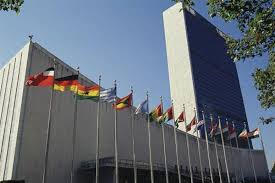
When it comes to fully understanding what it means to participate in an international tender through multilateral organizations or directly with foreign governments, we have to know in advance what are the most notable and differentiating characteristics that they have. Here are a series of brushstrokes that will help us better understand what we are talking about:
First of all, we would ask ourselves what is the reason for a public bidding procedure: The answer is that in general, projects of any type (works, supplies of goods or services) require a process by which it is guaranteed that the e
entity or person who is going to carry them out is the most optimal. We understand optimal as the person or entity that, by complying with a series of requirements related primarily to their experience, technical capacity and financial solvency, allows them to take care of the project at the best cost for the administration or contracting entity. Basically it's always like this.
What is the responsibility that arises when carrying out a project? The first thing that must be said is that carrying out a project for an international multilateral organization involves awarding, monitoring and supervising the contracts that are signed in relation to the same. In this sense, we would find several figures. That of the borrower (this is the country that receives the aid from the international multilateral financial organization that is responsible for the entire adjudication, monitoring and inspection process and that of the lender (it is this multilateral international organization that has the funds). coming from developed countries (for example, World Bank). The latter is the one that only monitors that the general rules of procedure are complied with.
It is different when the international multilateral organization is non-financial (for example, any United Nations agency). In these cases, this body is directly responsible for the entire entire process.
What is meant by Rule of Origin? This simply means that both the companies or people that participate in the tenders as well as the services or products that are the subject of the tender come from the beneficiary countries themselves (borrowers in the case of multilateral development organizations) or from the countries that are members. from the very institutions that donate the funds (lenders).
We are seeing that when we talk about international tenders we normally differentiate between Works (construction and civil works of any type), Supply of goods (purchase of any type of good) and finally provision of services (here we would talk about carrying out all types of studies consulting or technical, monitoring, educational, assistance, etc...). Why this differentiation? The answer is quite simple, because each type of project has sometimes different and specific operating rules and regulations.
An important characteristic of international tenders are also the ways in which the different notices and news related to the calls and any circumstance that concerns the projects being tendered are disseminated. This basically means that all international public organizations of a multilateral nature carry out their dissemination through separate INTERNET portals in which the calls and notices related to the projects they finance and lead can be consulted completely freely and free of charge. These notices even include information, specifications, procedures to follow, questions and answers from any entity or person that is participating, the final winner of the project and questions related to the execution and completion of the project itself.
Can the projects that are tendered be divided into lots within the same tender? The answer is affirmative, although this is not always the case depending on the type of project. In the same way that usually happens with national public tenders in Spain, it is quite normal for projects to be divided into parts. This especially happens with supply projects. It is about separating into more homogeneous parts that maintain an economic volume interesting enough for the bidding entities or persons to want to participate. In this way, greater competitiveness is achieved, thus making the process more efficient. The division by lots is common in almost all types of bidding in Multilateral International Organizations.
You can continue reading part 2 of this article here
Juan Manuel Garcia
Managing Partner EFIGESTIA



